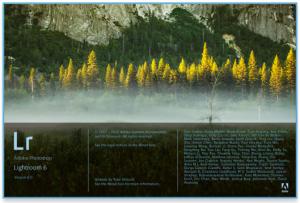20% off all products! Sale ends tonight at midnight EST.
December 6th, 2015 - 11:49 PM

Almost two years ago, I took up photography as a hobby. I knew there would be a lot to learn, and at various points over those 24 or so months, I thought I had learned the basics and even ventured into more complex areas. But each time I thought I had this photography thing nailed, I found whole new topics, tools, and techniques to learn that would vastly improve my photographic results.
By now I realize I'm barely beyond beginner, but I thought it might be helpful to share some of those topics, tools, and techniques I have learned with any of you who are either new to DSLR photography or who want to get past the "point and shoot in Auto" mode. To that end, I'll dedicate my next few monthly blogs to doing that. The first tool I'd like to share with you is Adobe Lightroom, which I find completely indispensable.
What is Lightroom?
First, what is Lightroom? Lightroom is the digital photographer's equivalent of the film photographer's darkrooms. With Lightroom, the digital photographer can take a surprising amount of control over the final results of their photos, just like film photographers do in their darkrooms. Things like exposure, white balance, clarity, contrast, color vibrancy and saturation, lens and camera corrections, and much, much more, can be fine-tuned with Lightroom.
Why Would I Want to Use it?
Digital photographers refer to the work they do in Lightroom (and other, similar tools including Photoshop), as "post processing." Just as with film photography, post processing can't make a poor photograph into a work of art. But it CAN turn that "perfect moment" shot you took that turned out horribly over- or under-exposed into a salvageable photo memory. It CAN turn a good shot into something you would be proud to hang on your wall. And it CAN help turn a beautifully composed and shot art photograph into a prize-winning shot.
What Photos Can be Processed with Lightroom?
While any digital photograph, including your old family photos scanned into digital format, can benefit from Lightroom processing, the greatest benefit is usually achieved with photographs saved in RAW format with your DSLR camera. The reason RAW format (as opposed to JPEG format) allows more Lightroom control is because it retains all the digital information that was available when the picture was taken. JPEG format does not retain all the information. Having that information allows Lightroom to "regain" detail in the photo that appears to be lost due to over- or under-processing. So those whited-out or almost black areas of your photo can usually be "fixed!" I've included a before and after here just as an example of one of the many types of improvements you can make to your photos.
BEFORE: I had been shooting flying birds in bright sunlight at the beach,
so my camera was set to ISO 100 and a fast shutter speed.
Obviously, not enough light for this shot of a bird in the shade of a tree!
AFTER: Because I saved this in RAW format, I was able to retrieve
all the blacked-out detail and save this shot with just a few clicks in Lightroom!
What is RAW Format?
If you're not sure what I mean by RAW format, check your DSLR camera's settings menu - you should be able to find a setting to save your images in RAW format rather than in JPEG format. Basically, it is your camera's native image format. Many cameras also allow you to save your images in both RAW and JPEG. This, of course, takes up more space on your memory card, but might be worth it if you're not sure you want all your images in RAW.
Where do I Get Lightroom?
Lightroom is an Adobe product and they sell it two ways. First (and their preferred method) is a subscription. The bad thing is that it's a subscription. The good thing is that you get BOTH Lightroom and Photoshop. Second is by buying the software and installing it on your computer. You can get this directly from Adobe (although they make it hard to find, since they prefer to sell subscriptions) or on Amazon and other similar sites. The current version is 6.1 and the 6.x series is, unfortunately, the last version they plan to offer as a stand-alone. The same is true for Photoshop.
Is it Difficult to Learn?
Lightroom, like all sophisticated software, has a TON of functionality that has evolved over time. This means that there is a lot to learn and that will take time. However, much of the functionality is somewhat intuitive, and Adobe and many, many other sites offer truly EXCELLENT tutorials, both free and paid. I've included a couple of those sites below, including some video tutorials by Julianne Kost, whose videos are among the best around. But if you google it, you'll find so many more!
www.digital-photography-school.com/post-production
www.jkost.com/lightroom.html
What Do You Think?
I hope you enjoyed this brief introduction to Lightroom. There are so many good tutorials out there and above are just two on Lightroom. You can check these out and google to find lots more. If you want to comment, you'll find contact information on my website, below.
Susan Molnar Fine Art Photography
www.susan-molnar.artistwebsites.com
Comments
There are no comments on this blog. Click here to post the first comment.